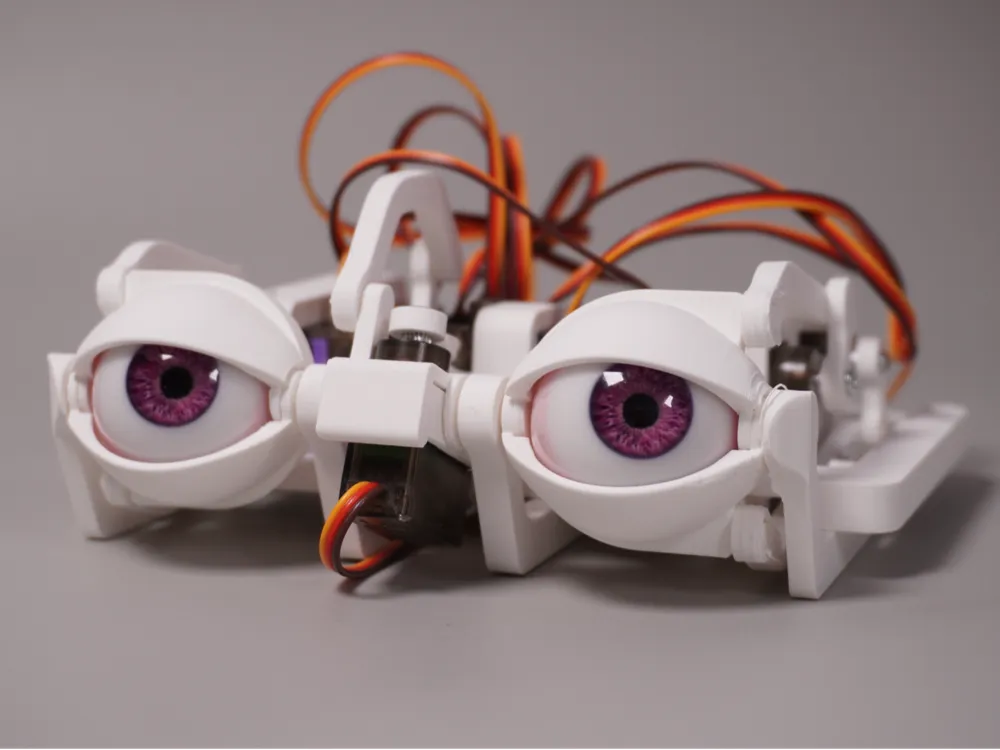DIY Realistic Animatronic Eyeballs — Complete Making Tutorial

Bring your creations to life with realistic animatronic eyeballs! This comprehensive tutorial offers a step-by-step guide to designing, building, and animating lifelike eyeballs for props, puppets, robotics, Halloween displays, and more. Whether you’re a hobbyist, student, or effects artist, this tutorial provides the detailed knowledge and techniques you need to produce convincing, mobile eyeballs that move and respond just like the real thing.
What You’ll Learn
This tutorial covers every stage of the animatronic eyeball creation process:
- Concept & Design
Learn how to plan your eyeball structure: choosing size, scale, pupil/iris dimensions, and internal components. You’ll also explore aesthetic detailing such as coloration, sclera texture, and veining. - Materials & Tools
A complete overview of what you’ll need—plastics, resins, servos, linkages, wiring, paint, sealants, adhesives, and specialty parts. The tutorial explains which materials work best and why. - Mechanics & Movement
Understand the mechanical principles to simulate realistic eye movement: horizontal (left–right), vertical (up–down), and blinking mechanisms. You’ll see how to design linkages, gearing, and mounting for smooth, controlled motion. - Electronics & Control
Step-by-step instruction on wiring, microcontrollers (e.g. Arduino or similar), servo calibration, sensors (optional for interactive movement), and programming the eye movements to respond to input or patterns. - Assembly & Finishing
Learn how to assemble all parts securely, mask and paint the eyeball surfaces, texturize veins, apply clear coats, and add finishing touches that give your eyeball realism. The tutorial also covers sealing and protection for long-term use. - Testing & Troubleshooting
A practical section for testing your animatronic eye, tuning motion to avoid jerky behavior, diagnosing common issues (e.g. servo jitter, binding, loose parts), and ensuring reliability.
Key Features
- Complete end-to-end instruction from concept through final testing
- Clear, illustrated steps and detailed diagrams
- Focus on realism, with tips on texturing, light reflection, and anatomical accuracy
- Flexible methods so you can adapt for different sizes or mechanical constraints
- Troubleshooting guidance to help smooth out common implementation hurdles
Who It’s For
This tutorial is ideal for:
- Prop makers & special effects artists looking to add lifelike eyes to puppets, masks, animatronics, or Halloween installations
- Hobbyists and DIY enthusiasts wanting a challenging but rewarding electronics/craft project
- Robotics & AI students who want to experiment with expressive, human-like components
- Film/TV/Stage creators needing convincing eye movement without relying on digital effects
Benefits & Applications
- Create expressive eyeballs that enhance realism and immersion
- Custom build eyeballs to suit different sizes and styles
- Add interactivity: blinking, gaze tracking, response to sensors
- Useful for films, theater, animatronic displays, haunted attractions, or art installations
- Deep learning experience in electronics, mechanical design, and craft finishing techniques
Things to Consider
- Patience and precision are essential: tiny misalignments or weak links can disrupt smooth motion
- Quality servos and materials cost more, but smaller motors or poor plastics may degrade performance
- Programming and electronics skills are a key part; if new to microcontrollers, allow extra time
- Field testing is crucial—ensure movement works under actual lighting and speeds



